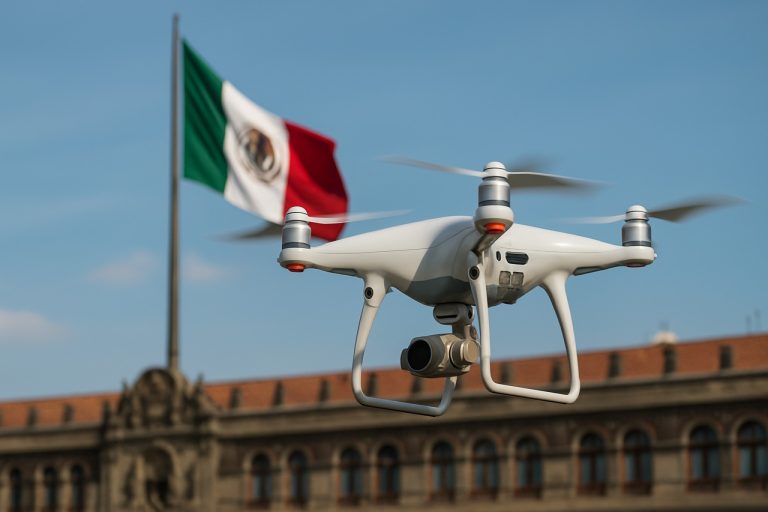
Blockchain-Based Supply Chain Analytics Market Report 2025: Unveiling Growth Drivers, Technology Shifts, and Strategic Opportunities for the Next 5 Years
- Executive Summary & Market Overview
- Key Technology Trends in Blockchain Supply Chain Analytics
- Competitive Landscape and Leading Players
- Market Growth Forecasts (2025–2030): CAGR, Revenue, and Adoption Rates
- Regional Analysis: North America, Europe, Asia-Pacific, and Rest of World
- Challenges, Risks, and Barriers to Adoption
- Opportunities and Strategic Recommendations
- Future Outlook: Emerging Use Cases and Long-Term Impact
- Sources & References
Executive Summary & Market Overview
Blockchain-based supply chain analytics represents a transformative convergence of distributed ledger technology and advanced data analytics, aimed at enhancing transparency, traceability, and efficiency across global supply chains. As of 2025, this market is experiencing robust growth, driven by increasing demand for real-time visibility, regulatory compliance, and risk mitigation in complex, multi-tiered supply networks.
The global blockchain supply chain market is projected to reach USD 14.9 billion by 2028, growing at a CAGR of 48.2% from 2023, according to MarketsandMarkets. This surge is fueled by the proliferation of IoT devices, heightened concerns over counterfeit goods, and the need for secure, immutable data sharing among stakeholders. Key industries adopting blockchain-based analytics include pharmaceuticals, food and beverage, automotive, and electronics, where provenance and compliance are critical.
In 2025, leading enterprises such as IBM, SAP, and Oracle are expanding their blockchain supply chain solutions, integrating advanced analytics and AI to deliver actionable insights from distributed data. These platforms enable end-to-end visibility, predictive analytics for demand and inventory management, and automated compliance reporting, reducing manual intervention and operational costs.
The adoption of blockchain-based analytics is also being accelerated by regulatory initiatives. For example, the U.S. Food and Drug Administration’s Drug Supply Chain Security Act (DSCSA) and the European Union’s Falsified Medicines Directive (FMD) are compelling pharmaceutical companies to implement traceability solutions, with blockchain emerging as a preferred technology due to its tamper-proof nature (U.S. Food and Drug Administration).
Despite its promise, the market faces challenges such as interoperability, scalability, and integration with legacy systems. However, ongoing standardization efforts by organizations like the GS1 and the International Organization for Standardization (ISO) are expected to address these barriers, paving the way for broader adoption.
In summary, blockchain-based supply chain analytics is poised for significant expansion in 2025, underpinned by technological innovation, regulatory drivers, and the imperative for resilient, transparent supply chains in a volatile global environment.
Key Technology Trends in Blockchain Supply Chain Analytics
Blockchain-based supply chain analytics in 2025 is characterized by the convergence of distributed ledger technology (DLT) with advanced data analytics, driving unprecedented transparency, traceability, and efficiency across global supply networks. As organizations increasingly prioritize resilience and agility, blockchain’s immutable and decentralized architecture is being leveraged to address persistent challenges such as data silos, counterfeiting, and lack of end-to-end visibility.
One of the most significant trends is the integration of blockchain with Internet of Things (IoT) devices and artificial intelligence (AI) to enable real-time data capture and predictive analytics. IoT sensors embedded throughout the supply chain feed granular, tamper-proof data into blockchain networks, while AI algorithms analyze this data to forecast demand, optimize inventory, and identify potential disruptions. This synergy is exemplified by initiatives such as IBM’s Blockchain Transparent Supply, which combines blockchain, IoT, and AI to deliver actionable insights and automate decision-making.
Interoperability is another key trend, with organizations adopting standardized protocols and consortium blockchains to facilitate seamless data exchange among diverse stakeholders. Platforms like Hyperledger and R3 are at the forefront, enabling cross-industry collaboration and reducing integration barriers. This is particularly relevant as supply chains become more global and complex, requiring secure, real-time sharing of analytics across multiple parties.
Smart contracts are increasingly being used to automate compliance, payments, and quality checks, reducing manual intervention and the risk of human error. For example, Maersk’s TradeLens platform leverages smart contracts to streamline documentation and settlement processes, providing stakeholders with instant, verifiable analytics on shipment status and performance metrics.
Finally, sustainability and ethical sourcing are gaining prominence, with blockchain analytics enabling companies to track carbon footprints, verify certifications, and ensure responsible sourcing. Solutions like Everledger are being adopted to provide immutable records of product provenance, supporting ESG (Environmental, Social, and Governance) reporting and compliance.
In summary, 2025 sees blockchain-based supply chain analytics evolving from pilot projects to enterprise-scale deployments, underpinned by integration with IoT, AI, and smart contracts, and driven by the need for transparency, efficiency, and sustainability in increasingly complex supply networks.
Competitive Landscape and Leading Players
The competitive landscape for blockchain-based supply chain analytics in 2025 is characterized by rapid innovation, strategic partnerships, and a growing number of both established technology giants and specialized startups. As enterprises increasingly seek transparency, traceability, and real-time insights across their supply chains, vendors are differentiating themselves through advanced analytics capabilities, interoperability, and industry-specific solutions.
Leading players in this market include major technology firms such as IBM, which has leveraged its IBM Blockchain platform to offer end-to-end supply chain visibility and analytics for sectors like food, pharmaceuticals, and manufacturing. Microsoft is another key competitor, integrating blockchain with its Azure cloud services to provide customizable analytics and compliance tools for global supply chains. SAP has also expanded its blockchain-enabled supply chain solutions, focusing on integration with its existing ERP and analytics platforms to deliver actionable insights and risk management features.
In addition to these established players, a wave of innovative startups is shaping the competitive dynamics. VeChain has gained traction with its blockchain-based platform tailored for product provenance and anti-counterfeiting, particularly in luxury goods and food safety. OriginTrail offers decentralized knowledge graphs for supply chain data interoperability, enabling advanced analytics across disparate systems. Modum and Ambrosus are also notable for their focus on IoT integration and real-time analytics in logistics and pharmaceuticals.
Strategic collaborations are a hallmark of the sector, with companies like IBM partnering with food industry leaders such as Walmart and Carrefour to enhance food traceability, while SAP collaborates with logistics providers to streamline cross-border trade analytics. According to Gartner, global spending on blockchain solutions for supply chain management is projected to reach $1.9 billion in 2025, underscoring the market’s growth potential and competitive intensity.
Overall, the 2025 landscape is marked by a blend of robust enterprise offerings and agile, niche innovators, with competition centering on scalability, data integration, and the ability to deliver actionable, real-time analytics that drive supply chain resilience and efficiency.
Market Growth Forecasts (2025–2030): CAGR, Revenue, and Adoption Rates
The market for blockchain-based supply chain analytics is poised for robust growth between 2025 and 2030, driven by increasing demand for transparency, traceability, and real-time data sharing across global supply chains. According to projections by Gartner, the global blockchain for supply chain market is expected to reach approximately $3 billion by 2030, up from an estimated $700 million in 2025. This translates to a compound annual growth rate (CAGR) of around 32% during the forecast period.
Several factors are fueling this expansion. Enterprises are increasingly adopting blockchain-based analytics to combat counterfeiting, ensure regulatory compliance, and optimize logistics. The integration of blockchain with advanced analytics tools enables real-time monitoring of goods, predictive risk management, and automated dispute resolution, which are critical for industries such as pharmaceuticals, food and beverage, and electronics.
Adoption rates are expected to accelerate, particularly among large enterprises and multinational corporations. By 2027, IDC forecasts that over 40% of global supply chain leaders will have piloted or deployed blockchain-enabled analytics solutions, up from less than 15% in 2024. The Asia-Pacific region is anticipated to witness the fastest adoption, driven by manufacturing hubs in China, Japan, and South Korea, while North America and Europe will continue to lead in terms of early innovation and investment.
Revenue growth will be further supported by the proliferation of industry consortia and partnerships, such as those led by IBM and SAP, which are lowering barriers to entry and accelerating time-to-value for blockchain-based analytics platforms. Additionally, regulatory initiatives in the EU and US mandating greater supply chain transparency are expected to drive enterprise spending on blockchain solutions.
In summary, the period from 2025 to 2030 will see blockchain-based supply chain analytics transition from early adoption to mainstream deployment, with high double-digit CAGR, rapidly rising revenue, and increasing adoption rates across key industries and regions.
Regional Analysis: North America, Europe, Asia-Pacific, and Rest of World
The adoption and impact of blockchain-based supply chain analytics vary significantly across regions, shaped by regulatory environments, technological infrastructure, and industry priorities. In 2025, North America, Europe, Asia-Pacific, and the Rest of the World (RoW) each present distinct market dynamics and growth trajectories.
- North America: North America remains at the forefront of blockchain-based supply chain analytics, driven by early adoption among large enterprises and robust investment in digital transformation. The United States, in particular, benefits from a mature technology ecosystem and strong regulatory support for blockchain innovation. Sectors such as pharmaceuticals, food & beverage, and automotive are leveraging blockchain to enhance traceability and compliance. According to International Data Corporation (IDC), North America accounted for over 40% of global blockchain spending in supply chain applications in 2024, a trend expected to continue into 2025.
- Europe: Europe’s market is characterized by stringent regulatory frameworks, such as the EU’s General Data Protection Regulation (GDPR) and the Digital Markets Act, which influence blockchain deployment strategies. The region’s focus on sustainability and ethical sourcing has accelerated blockchain adoption in industries like agriculture and luxury goods. Initiatives by the European Commission to standardize blockchain protocols and promote cross-border interoperability are fostering a collaborative environment for supply chain analytics innovation.
- Asia-Pacific: The Asia-Pacific region is experiencing rapid growth, fueled by manufacturing powerhouses such as China, Japan, and South Korea. Governments are actively supporting blockchain pilots to address counterfeiting and improve logistics efficiency. For instance, China’s “Blockchain Service Network” initiative is expanding blockchain infrastructure nationwide. According to Gartner, Asia-Pacific is projected to witness the highest CAGR in blockchain-based supply chain analytics through 2025, driven by e-commerce expansion and digital trade initiatives.
- Rest of World (RoW): In regions such as Latin America, the Middle East, and Africa, adoption is nascent but growing, particularly in sectors like agriculture and mining where supply chain transparency is critical. Challenges include limited digital infrastructure and regulatory uncertainty. However, pilot projects supported by organizations like the World Bank are demonstrating the potential for blockchain to address issues such as fraud and inefficiency in cross-border trade.
Overall, while North America and Europe lead in maturity and regulatory clarity, Asia-Pacific is emerging as a high-growth market, and RoW regions are exploring blockchain’s transformative potential in supply chain analytics.
Challenges, Risks, and Barriers to Adoption
Despite the transformative potential of blockchain-based supply chain analytics, several challenges, risks, and barriers continue to impede widespread adoption as of 2025. These obstacles span technical, organizational, regulatory, and market-related dimensions, affecting both early adopters and those considering implementation.
- Integration Complexity: Integrating blockchain solutions with legacy supply chain management systems remains a significant hurdle. Many organizations operate on outdated infrastructure, making seamless data exchange and interoperability with blockchain platforms difficult and costly. According to Gartner, over 60% of supply chain leaders cite integration with existing IT systems as a primary barrier to blockchain adoption.
- Data Privacy and Security Concerns: While blockchain offers enhanced transparency, it also raises concerns about sensitive business information being exposed to competitors or unauthorized parties. The immutable nature of blockchain can complicate compliance with data privacy regulations such as GDPR, especially when personal or proprietary data is involved (Deloitte).
- Scalability and Performance: Public blockchains, in particular, face scalability issues, with transaction throughput and latency posing challenges for high-volume supply chains. Even permissioned blockchains, while more efficient, may struggle to handle the data intensity of global supply networks (IBM).
- Standardization and Interoperability: The lack of universally accepted standards for blockchain protocols and data formats hinders interoperability between different platforms and stakeholders. This fragmentation can lead to vendor lock-in and limit the network effects necessary for blockchain’s full value realization (International Organization for Standardization).
- Regulatory Uncertainty: Evolving and inconsistent regulatory frameworks across jurisdictions create uncertainty for organizations considering blockchain-based analytics. Issues around digital asset classification, smart contract enforceability, and cross-border data flows remain unresolved in many regions (World Economic Forum).
- High Initial Investment and ROI Uncertainty: The upfront costs of blockchain implementation—including technology, training, and process redesign—are substantial. Many companies remain unconvinced about the short- to medium-term return on investment, especially given the nascent state of the technology (PwC).
Addressing these challenges will require coordinated efforts among technology providers, industry consortia, regulators, and end-users to develop scalable, secure, and interoperable blockchain solutions tailored to the complex realities of global supply chains.
Opportunities and Strategic Recommendations
The integration of blockchain technology into supply chain analytics is poised to unlock significant opportunities in 2025, driven by the demand for transparency, traceability, and operational efficiency. As global supply chains become increasingly complex, blockchain’s decentralized ledger offers a robust solution for real-time data sharing, fraud prevention, and compliance management. This section outlines key opportunities and strategic recommendations for stakeholders aiming to capitalize on blockchain-based supply chain analytics.
- Enhanced Transparency and Traceability: Blockchain enables immutable record-keeping, allowing all stakeholders to access a single source of truth. This is particularly valuable in industries such as pharmaceuticals, food, and luxury goods, where provenance and authenticity are critical. Companies can leverage this transparency to build consumer trust and meet regulatory requirements, as highlighted by IBM and Deloitte.
- Operational Efficiency and Cost Reduction: By automating processes through smart contracts, organizations can reduce manual interventions, minimize errors, and accelerate transaction settlements. This leads to lower operational costs and improved supply chain agility, as noted by Gartner.
- Risk Mitigation and Compliance: Blockchain’s auditability supports compliance with evolving regulations and standards, such as those related to ESG (Environmental, Social, and Governance) reporting. Real-time analytics on blockchain data can help identify risks and anomalies early, enabling proactive mitigation strategies, as discussed by PwC.
- Data Monetization and Ecosystem Collaboration: Blockchain facilitates secure data sharing among supply chain partners, opening avenues for data monetization and collaborative analytics. This can foster new business models and revenue streams, as explored by Accenture.
Strategic Recommendations:
- Invest in pilot projects to validate blockchain’s ROI in targeted supply chain segments before scaling.
- Collaborate with technology providers and industry consortia to ensure interoperability and standardization.
- Prioritize use cases with high regulatory or consumer scrutiny to maximize early impact.
- Develop in-house blockchain expertise and integrate analytics capabilities to extract actionable insights from distributed ledgers.
By strategically embracing blockchain-based supply chain analytics, organizations can gain a competitive edge in 2025 through improved transparency, efficiency, and resilience.
Future Outlook: Emerging Use Cases and Long-Term Impact
Looking ahead to 2025 and beyond, blockchain-based supply chain analytics is poised to transform global trade, manufacturing, and logistics through a combination of transparency, automation, and data-driven insights. As adoption accelerates, several emerging use cases are expected to redefine industry standards and create long-term impacts across sectors.
One of the most promising developments is the integration of blockchain with Internet of Things (IoT) devices and artificial intelligence (AI) for real-time, end-to-end supply chain visibility. By 2025, leading manufacturers and logistics providers are expected to leverage blockchain to securely aggregate sensor data, automate anomaly detection, and trigger smart contract-based responses to disruptions. This convergence is anticipated to reduce fraud, improve traceability, and optimize inventory management, as highlighted by Gartner.
Another emerging use case is the facilitation of sustainable and ethical sourcing. Blockchain’s immutable ledger enables companies to verify the provenance of raw materials, ensuring compliance with environmental and labor standards. By 2025, consumer-facing brands in sectors such as food, apparel, and electronics are expected to use blockchain analytics to provide transparent product histories, supporting regulatory compliance and consumer trust. According to IBM, this capability is already being piloted in food safety and is likely to expand rapidly.
Cross-border trade and customs clearance are also set for disruption. Blockchain-based analytics can streamline documentation, automate tariff calculations, and reduce administrative bottlenecks. The World Economic Forum projects that by 2025, blockchain-enabled trade platforms will significantly lower transaction costs and settlement times, particularly for small and medium-sized enterprises (SMEs).
In the long term, the cumulative impact of blockchain-based supply chain analytics is expected to be profound. Enhanced data integrity and interoperability will foster new business models, such as decentralized supply chain finance and collaborative logistics networks. As noted by Deloitte, these innovations could unlock billions in value by reducing inefficiencies and enabling more agile, resilient supply chains.
Overall, the future outlook for blockchain-based supply chain analytics in 2025 is characterized by rapid technological integration, expanding use cases, and a shift toward more transparent, efficient, and sustainable global supply networks.
Sources & References
- MarketsandMarkets
- IBM
- Oracle
- GS1
- Hyperledger
- Maersk’s TradeLens
- VeChain
- OriginTrail
- IDC
- European Commission
- World Bank
- Deloitte
- PwC
- Deloitte
- Accenture



